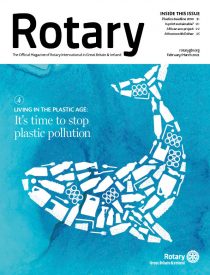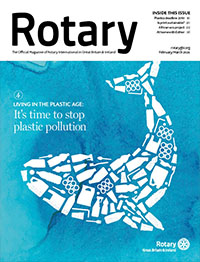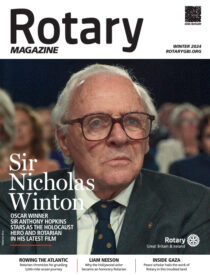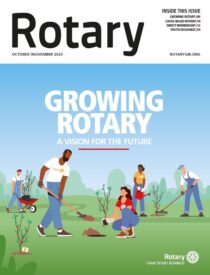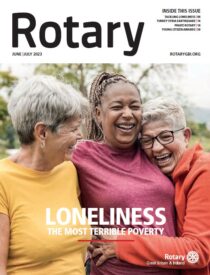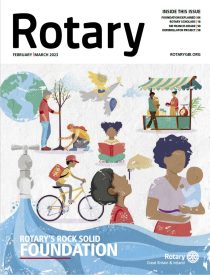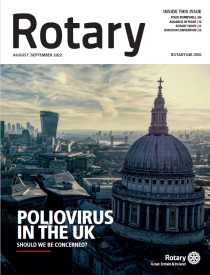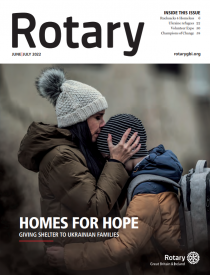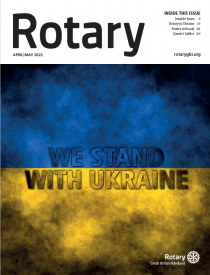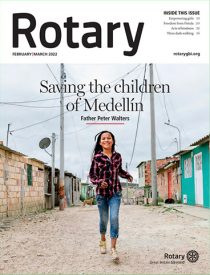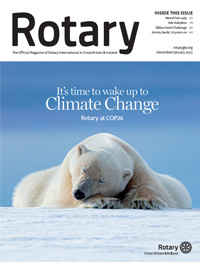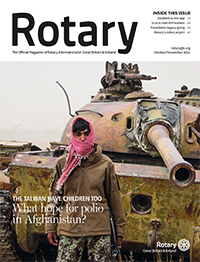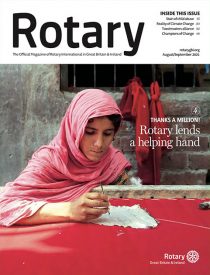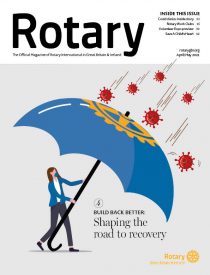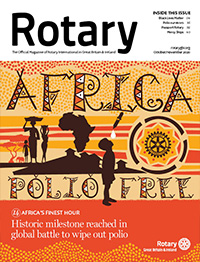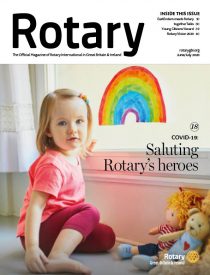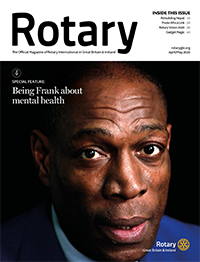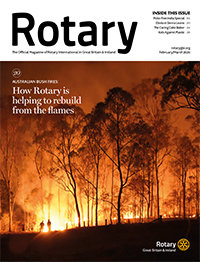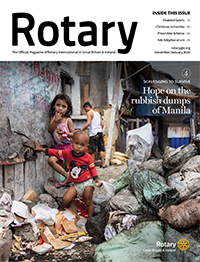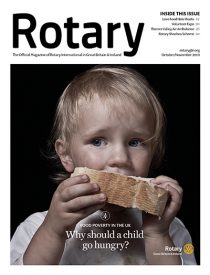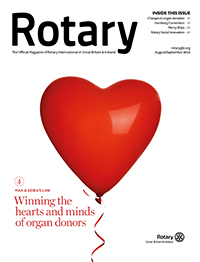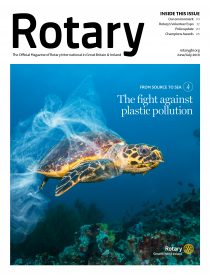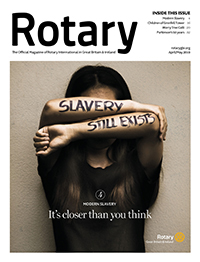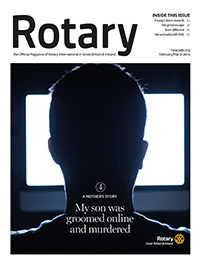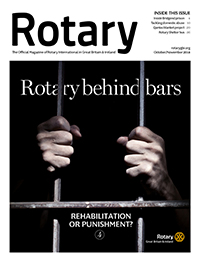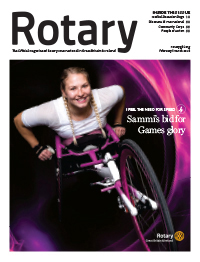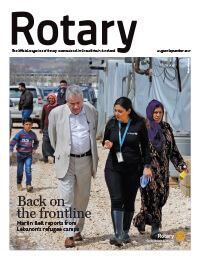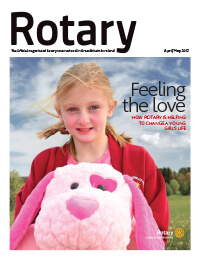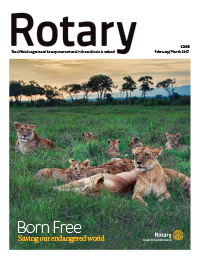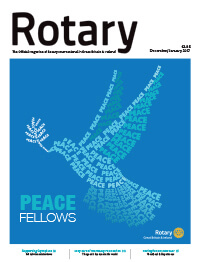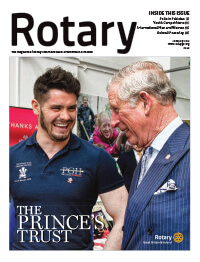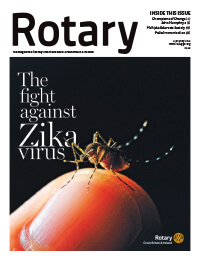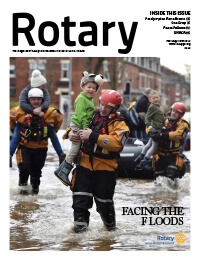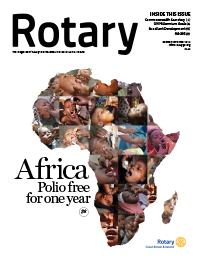Climate change and the environment is a big ticket concern for many. Today, we are all making careful lifestyle choices based on the impact which our everyday actions are having on the planet.
So it was no surprise when Rotary International announced last year that protecting the environment would become its seventh Area of Focus.
Rotary has always been conscious of its impact on the planet, considering the environmental impact of everything it does, whilst encouraging Rotarians to do the same.
However, some have questioned the environmental cost and value of producing a print magazine in a digital world of information.
So, let’s address these concerns by taking an in-depth look into Rotary magazine’s true cost to the environment, as well as exploring measures which have been put in place to reduce its impact.
Why do you use plastic wrapping?
In recent years single-use plastic has formed an increasingly bad reputation because of its impact on the environment.
Currently, the magazine is wrapped in a recycled lightweight polywrap.
Despite the wrapping being recycled, it remains a concern among some. So, we have been looking into some alternative options.
The strategic decision to use recycled poly to wrap Rotary magazine, which is posted to 40,000 Rotarians, was made because it is the most cost-effective option. It is also 100% recyclable, and fit for purpose. Don’t forget, the magazine is funded by its members.


Rotarians are encouraged to recycle the polywrap through household recycling, or at larger recycling points, such as those found at supermarkets.
Rotarians are encouraged to recycle the polywrap through household recycling, or at larger recycling points, such as those found at supermarkets.
However, the wrapping will be changed. We’re looking at either a paper wrap or 100% compostable paper starch, both of which are sustainable and offer the best environmental solution available. The aim is to implement the new packaging later this year.
Doesn’t the use of paper add to deforestation?
How do you think forests are doing? Declining at a disastrous rate year after year? Wrong. A 2019 survey by Two Sides found that 59% of European consumers believe European forests are shrinking.
However, between 2005, and 2015 they grew significantly. Their expansion over the decade equates to an area the size of Switzerland.
The paper used to publish Rotary magazine is known as FSC ®. It is sourced from sustainable forests within Europe where the trees are planted similar to crops, but purely for the purpose of making paper.
A 2019 survey by Two Sides found that 59% of European consumers believe European forests are shrinking.”
The forests from which Rotary magazine paper is produced are certified by the Programme for the Endorsement of Forest Certification Schemes (PEFC).
This is an international certification scheme ensuring that forests are managed in an ecologically sustainable way.
This certification is a reassurance that the paper we use comes from a sustainable source.
In terms of printing, Rotary in Great Britain & Ireland employs a certificated print supplier who is FSC certificated, and has been awarded both 19001 and 1500 quality and environmental accreditations.
Are your publishers ethical?
Rotary ensures that all of its suppliers meet its high ethical standards and strong environmental ethos.
Contently, who are Rotary magazine’s publisher, work closely with its suppliers and customers to address environmental issues. All of its magazine suppliers have environmental credentials.
Contently are committed to continually improving their environmental performance by controlling and managing their operational activities and products.
Why doesn’t the Rotary magazine just go digital?
Today we live in an increasingly digital world, but let’s not forget that digital also has an environmental impact too. That’s something which is often ignored.
According to a study by the Boston Consulting Group, the internet is responsible for roughly one billion tonnes of greenhouse gases a year, or around 2% of world emissions.
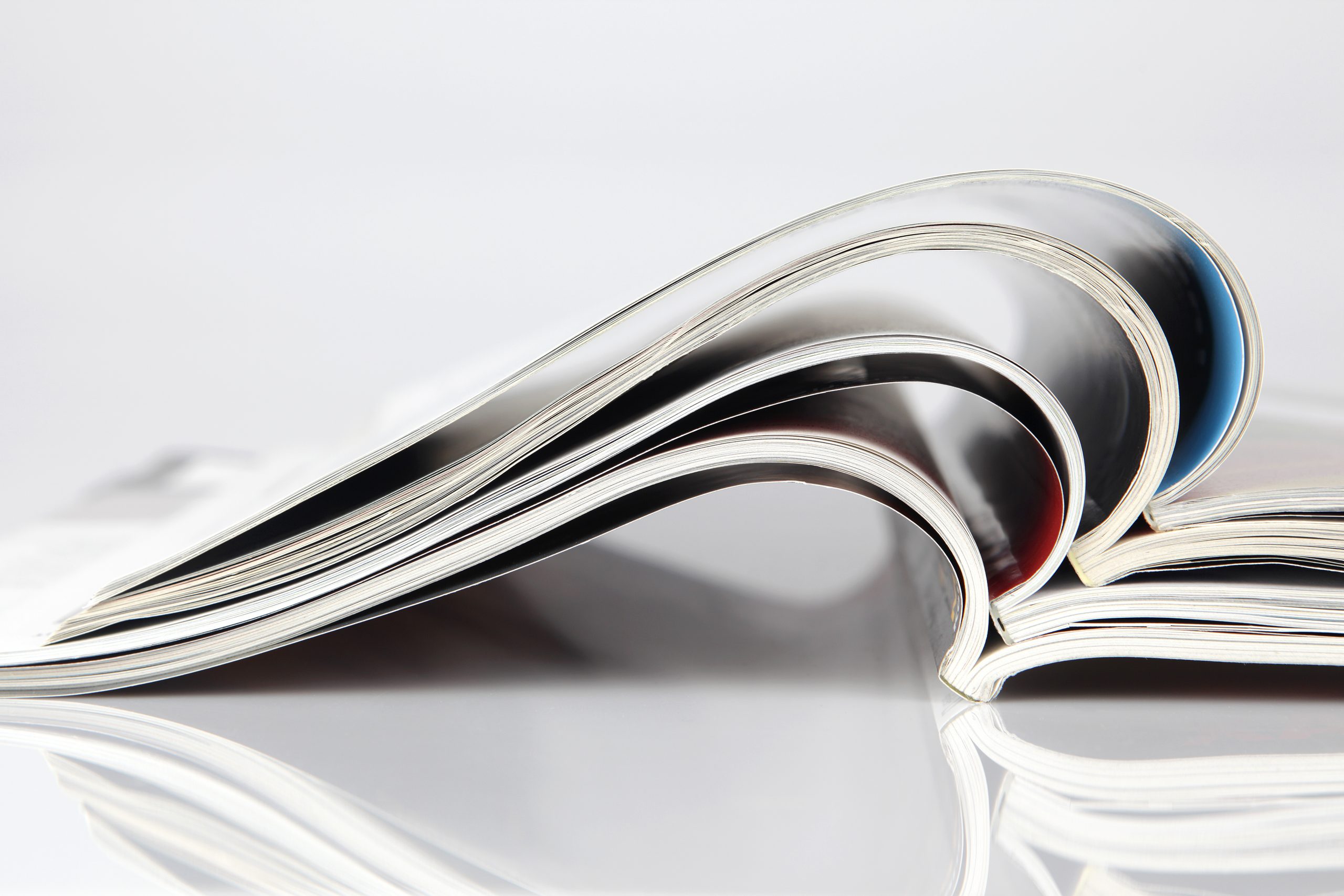

Even in today’s digital world, don’t underestimate the power of print.
Even though in today’s world more news and information is becoming available online, abandoning the physical magazine and focussing purely on digital would be a huge backward step for Rotary’s promotional activity.
A survey of over 10,700 consumers in 2017 found 72% of consumers preferred to read the printed versions of magazines over the digital copy.
Even in today’s digital world, don’t underestimate the power of print.
Rotary magazine is our best marketing tool
Although Rotary magazine articles are also published online, there is something special about having a physical copy which people can read.
And from a commercial point of view, advertisers love it too because of the longevity of print and response rate.
Many clubs and Rotarians have adopted the ‘Read It and Leave It’ initiative.
They realise how you can use Rotary magazine as a prime marketing tool to boost membership, as well as increase awareness, by leaving copies at key public points, or passing it on to friends and family.
Clearly, in the current Covid climate, this initiative has taken a back seat, but the opportunity is there to spread the word to the wider public about Rotary.
They realise how you can use Rotary magazine as a prime marketing tool to boost membership, as well as increase awareness, by leaving copies at key public points, or passing it on to friends and family.”
Some 10,000 copies of Rotary magazine are currently distributed each issue to Sainsbury’s supermarkets around the country to raise Rotary’s profile.
All of these copies are picked up by the public who read about Rotary’s incredible triumphs and stories, showcasing People of Action.
Is Rotary magazine sustainable? The answer is yes. The print industry is one of the most sustainable in the world, with great green credentials.
You should feel comfortable knowing that you can enjoy Rotary magazine in the physical format, and a carbon footprint which is incredibly low.
References:
- Two Sides- The Myths and Facts booklet
- PPA Magazine Wrapping Guidelines
- Digital and Printed Magazines’,Effects on the Environment, Jeannie Nguyen, 2010
- The Guardian- How sustainable are printed magazines?








